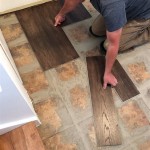Utility Oak Flooring Reviews: A Comprehensive Guide
Utility oak flooring is a popular choice for homeowners seeking a durable and affordable hardwood flooring option. Known for its resilience and classic appeal, utility oak is a versatile choice that can complement various interior design styles. However, choosing the right utility oak flooring for your home requires careful consideration of its characteristics, pros, cons, and available options. This article aims to provide a comprehensive guide to utility oak flooring, including reviews and insights to assist you in making an informed decision.
Understanding Utility Oak Flooring
Utility oak flooring refers to a specific grade of oak lumber that is classified for its practical use. It typically features a higher percentage of knots, grain patterns, and color variations compared to higher-grade oak flooring. These characteristics contribute to its affordability while maintaining the durability and beauty of solid oak. While utility oak may not have the uniform appearance of select or premium oak, it showcases the natural character and rustic charm of the wood.
Pros and Cons of Utility Oak Flooring
Utility oak flooring offers several advantages, making it a popular choice for various applications. Its key benefits include:
- Affordability: The lower grade of utility oak makes it significantly cheaper than higher-grade oak flooring, providing a cost-effective solution for homeowners on a budget.
- Durability: Oak is known for its strength and resilience, making utility oak flooring suitable for high-traffic areas and families with pets or children.
- Natural Beauty: Even with its knots and variations, utility oak exhibits the natural beauty and character of solid hardwood flooring, adding warmth and authenticity to any room.
- Easy Maintenance: Hardwood floors, including utility oak, are relatively easy to clean and maintain with regular sweeping, mopping, and occasional refinishing.
However, utility oak flooring also has some drawbacks to consider:
- Appearance: The presence of knots and color variations may not be aesthetically pleasing to all tastes. Homeowners seeking a perfectly uniform appearance may prefer higher-grade oak flooring.
- Potential for Warping: The higher moisture content in utility oak can make it susceptible to warping or cupping if not properly acclimated and installed.
- Limited Lifespan: While durable, utility oak may require refinishing sooner than higher-grade oak due to the presence of knots and variations.
Considerations for Choosing Utility Oak Flooring
Selecting the right utility oak flooring involves evaluating several factors to ensure it meets your specific needs and preferences:
1. Grade and Quality
Utility oak flooring is available in different grades, each with its own characteristics. Some common grades include:
- Select and Better: These grades typically feature fewer knots and more consistent color and grain patterns.
- No. 1 Common: This grade offers a balanced blend of affordability and aesthetics, with moderate knots and color variations.
- No. 2 Common: This grade has a higher percentage of knots and color variations, resulting in a more rustic appearance.
The chosen grade will significantly affect the final appearance of your floor and its longevity. Consider your desired aesthetic and budget to determine the optimal grade for your project.
2. Wood Species
While utility oak is the most common choice, other hardwood species, such as hickory and maple, are also available in utility grades. Each species has its own unique characteristics, including color, grain pattern, and hardness. Research different species to find the best option for your specific needs.
3. Finishing Options
Utility oak flooring can be finished in many ways, including:
- Staining: Staining allows you to customize the color of your floor to match your décor. Choose from a wide range of colors and shades to achieve the desired aesthetic.
- Sealing: Sealing protects the wood from moisture and wear, enhancing its durability and longevity. Polyurethane, wax, and oil are common sealing options.
- Distressing: Distressing involves creating a weathered or aged look, adding rustic charm to your flooring.
Consider your style preferences and desired level of protection when selecting finishing options for your utility oak flooring.
4. Installation Method
Utility oak flooring can be installed using various methods, including:
- Nail-down: This traditional method involves nailing the planks directly to the subfloor.
- Glue-down: This method uses adhesive to secure the planks to the subfloor, providing a solid and durable installation.
- Floating: This method uses a click-lock system to connect the planks, allowing them to "float" over the subfloor.
The chosen installation method will affect the installation process, the final result, and the overall cost. Consult with a professional installer to determine the best option for your project.
By carefully considering these factors, you can select utility oak flooring that meets your specific needs and budget, ensuring a beautiful and durable flooring solution for your home.

White Oak 3 Common Utility Grade Unfinished Solid Hardwood Flooring Floor Depot

Reviews For Trafficmaster Greyed Oak Wood 10 Mil X 12 Ft W Cut To Length Waterproof Vinyl Sheet Flooring Pg 3 The Home Depot

Bellawood From Lumber Liquidators

Flooring 101 Understanding Wood Grades Carlisle Wide Plank Floors

White Oak Hardwood Flooring Ll

Installing A Wood Floor Oak Ep 129

Pergo Timbercraft Wetprotect With Underlayment Attached Lathrop Oak 12 Mm T X 7 1 2 In W 47 4 L Waterproof Wood Plank Laminate Flooring 22 09 Sq Ft Carton The Department At Com

White Oak 3 Common Utility Grade Unfinished Solid Hardwood Flooring Floor Depot

Bruce America S Best Choice Dune Trail White Oak 5 In W X 3 4 T Varying Length Wirebrushed Solid Hardwood Flooring 23 Sq Ft Carton The Department At Com

Weathered Oak Floor Reveal More Demo
Related Posts








